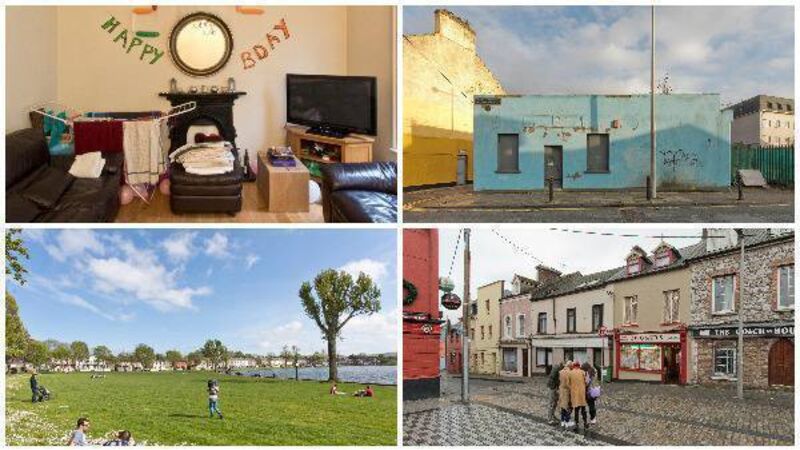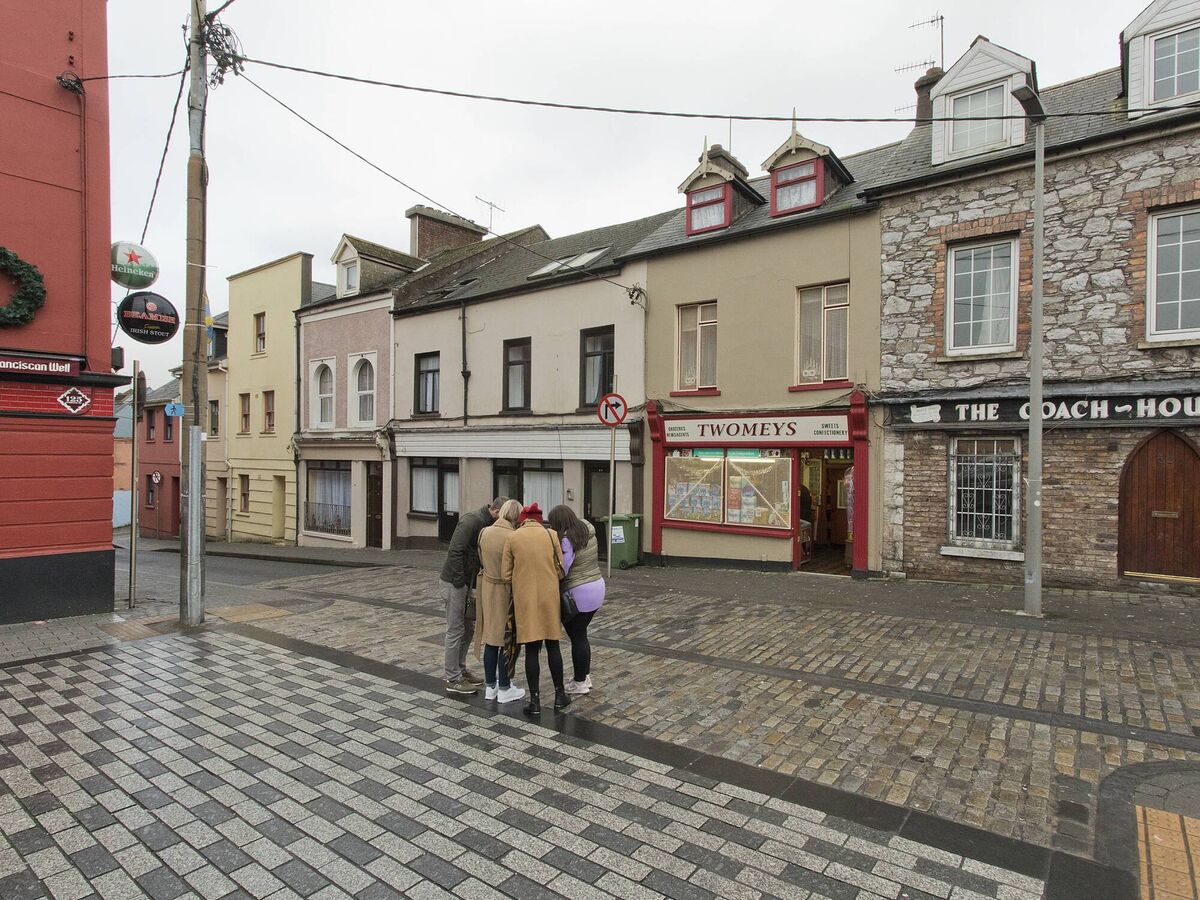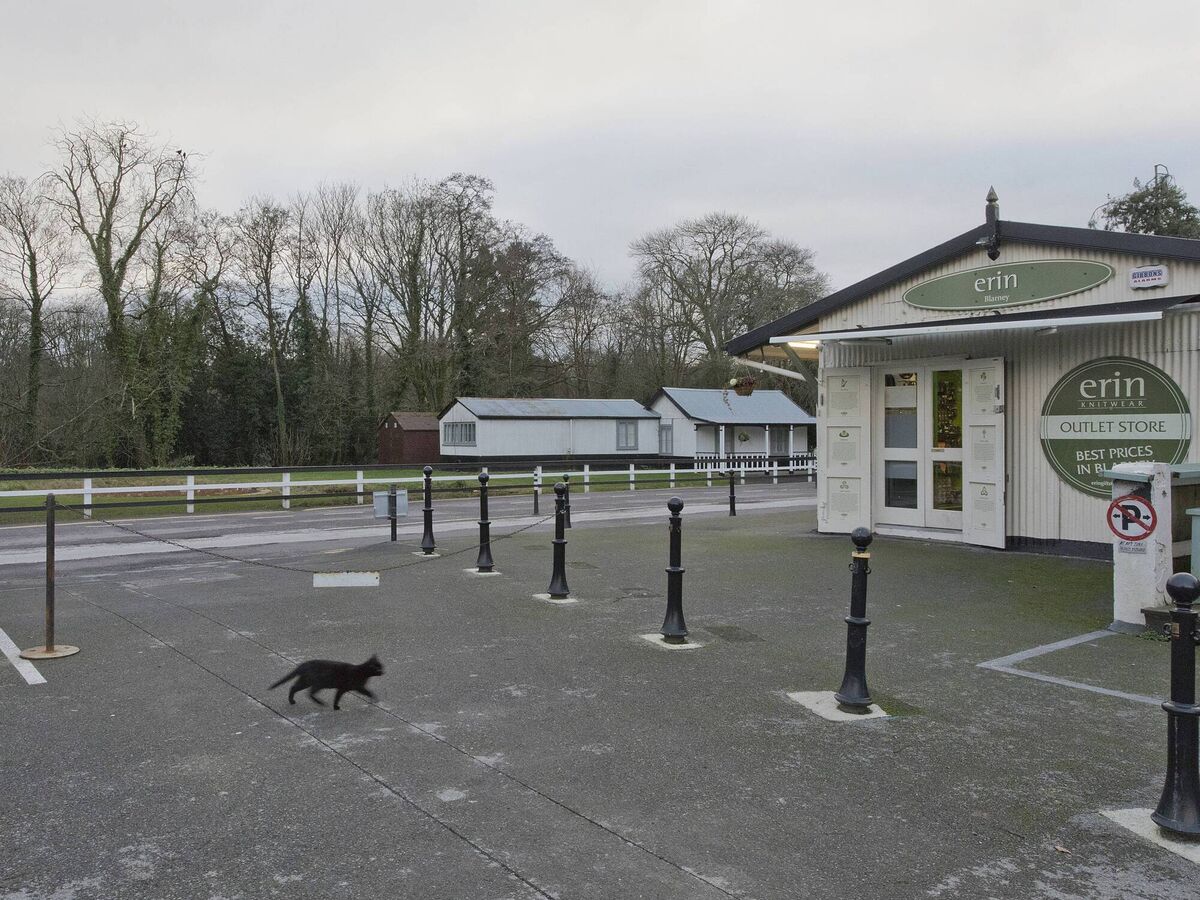Fascinating photography project revisits sites of War of Independence killings in Cork

Dara McGrath's photographs of the Cork sites where killings took place are accompanied by explanations of what happened.
One summer’s night, a young woman of nineteen was using the last of the fading light to do some sewing at her window on the first floor of a house on French’s Quay in Cork.
Suddenly, there was an outburst of gunfire: Josephine Scannell, the young woman at the window, was hit in the head by a stray bullet and died shortly afterwards. It was a Thursday night, June 23, 1921.
Almost 100 years later, photographer Dara McGrath stood on the doorstep of the building where she had been shot, explaining to the occupants of the apartment that he wanted to come in and photograph the room in which Scannell was shot.
“I cold-called the house, knocked at the door with my cover letters and explanation of what had happened in their apartment,” McGrath says. “They were a family, with toddlers, and they said to me, which room did it happen in? I told them. The room was being used for storage. They said, ‘that’s amazing, because the children are always pointing up into the corner of that room.’”
But despite the eeriness of some of McGrath’s new exhibition, For Those That Tell No Tales, and the deaths it memorialises, it’s not exactly a ghost story.

During the Irish War of Independence, between 1919 and 1921, 528 people died as a direct result of the conflict in Cork city and county. In 2017, McGrath started tracking down the exact locations of their deaths and photographing the sites for his centenary project.
Working with a UCC website called irishrevolution.ie, founded by UCC historian Andy Bielenberg and Professor James Donnelly from the University of Wisconsin, McGrath, whose day job is at Cork Public Museum, set out to faithfully document the deaths of IRA volunteers, British army personnel, and civilians like Josephine Scannell alike.
Not everybody wants these deaths to be viewed on an equal footing. To the victor goes the spoils, and in the case of the foundation of the Irish state, the spoils included determining what narrative was applied to the writing of history; but war is messy, and the stories McGrath is telling include tragic accidents, bungled bombs, merciless executions on both sides, and the abduction and murder of informants.
They also include the deaths of innocent bystanders: most notably, the Swedish sailor Karl Johannsen.
“He was nothing to do with the conflict, and he was on his way back to his boat after a drink, and he was shot,” McGrath says. “I could find nothing on the guy: I could find his boat, and that was about it. There’s a sadness about that.”
McGrath’s images are everyday modern street scenes and interiors, whose very mundanity gives pause for thought: Echoes of this 100-year-old violence are all around us, if only we take time to look.
The photos are accompanied by a carefully dispassionate text recounting the event surrounding the death, and the life, livelihood and family of the person who died.

Commemorating Black and Tans alongside IRA Volunteers is, McGrath knows, going to be controversial for some. It made him approach the project with some trepidation.
“I felt reluctant to start it: who am I, a Limerick-born person, to be talking about Cork history anyway?” he says with a little smile. “People are very passionate about where they come from, about what their grandparents and great-grandparents did during that troubled period. I felt I was walking into something I could get hammered by.
“I think I’m going to upset people a little bit. They’ve grown up with a tale that their grandparents or parents have told them and that doesn’t always tally with my version or UCC’s version. People who are dead can’t tell tales, but people who live can, so one version of the story we have is the accounts of the veterans of the War of Independence.
"But then we also have the physical proof: coroner’s reports and military enquiries. Witness statements can be problematic, because people change their account to suit their needs.”
The Black and Tans’ reputation for brutality abounds, but as individuals, the British soldiers who lost their lives were “human beings too”, McGrath says.
“A lot of them were suffering from PTSD, a lot of them were alcoholics. On the Irish side, there were a lot of ex-servicemen who had come back from the great war, who were traumatised, unemployed. On the British side, they were demobbed, and some had the chance to come and fight in Ireland and some took it,” he says with a shrug.
“War is shit. War is a mess. No matter when or where. And we see it being played out over and over again, at the moment, in places like Syria and Yemen.”
McGrath might have approached his project with a historian’s precision, research and dedication to archived materials, but it’s very much an artist’s view too. He’s been inspired by the work of others, including UK photographer Chloe Dewe Matthews, whose Shot At Dawn documented sites where British, French and Belgian deserters were executed for cowardice in the First World War.

“People go in to see an exhibition and they have this preconceived idea: there’ll be historical images, text, quotes, blah blah blah,” McGrath says. “But you can strip it back and reinvent the notion of looking at history. Many artists have worked with history creatively over the years. I don’t think there’s anything new about that: I’m taking a pretty tried and tested methodology and applying it to the city I call home.”
McGrath, whose previous work includes Project Cleansweep, an eight-year exploration of chemical weapons sites in the UK, is given to lengthy projects that expand over time, and For Those That Tell No Tales is no different.
For three years, he devoted “a half day every Friday, and every Sunday” to visiting and revisiting sites. Now, he’s compiling the work into a photography book that will both compliment and outlive his current exhibition.
Objects that appear as props in some photographs – three abandoned buggies at Carroll’s bog, where father and son James and Frederick Blemens were buried following their execution as spies, a chair and a blanket on the Blackrock Road where civilian William Mohally was found executed and covered in blankets – are not staged, but are the result of McGrath returning to work the site over and over again, he says.
“I tried to think about what could have happened in that moment. So in one image, there’s a flock of pigeons bursting up from the ground: that was slightly away from the site, but I thought, if there had been a gunshot, the birds would have done that.
“I had to think very deeply about the relationship between me as a photographer, the place, and the history of the place.”
- For Those That Tell No Tales can be viewed online at The Crawford Art Gallery’s website and in-person following the gallery’s reopening on Monday, May 10. McGrath’s photographs are also displayed on billboards throughout the city, and a map is available here



